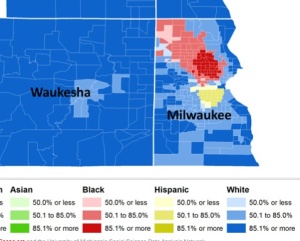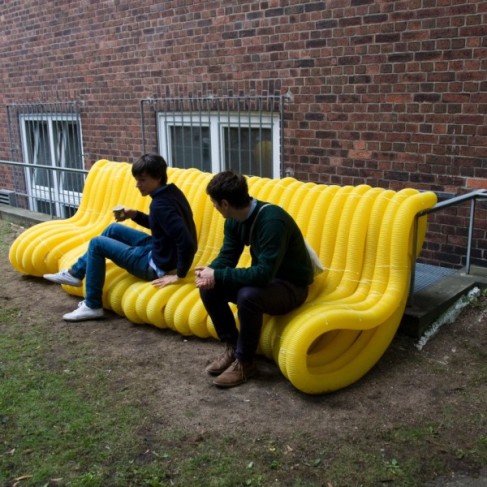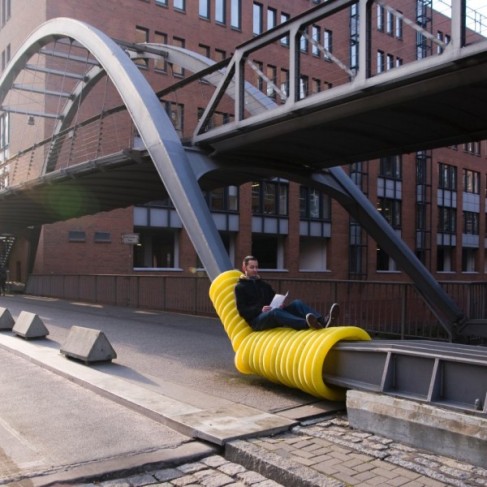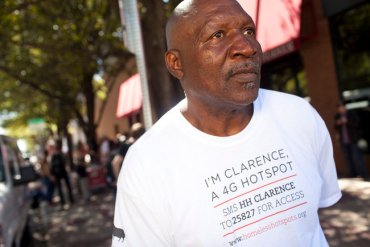Racial landscape of cities
The 10 most segregated urban areas in America
http://www.salon.com/2011/03/29/most_segregated_cities/slide_show/
big box stores…theo
We were talking about street vendors and the benefits, but here is an article that counters that and advocates big box stores like Target and Wal-Mart. I don’t fully agree at all, but it’s interesting.
Pedestrians l o s i n g the way…theo
http://www.nytimes.com/2011/11/13/realestate/streetscapes-the-pedestrian-loses-the-way.html?_r=2
This is an interesting article that relates really well with our discussions recently. It explores the evolution of the open street and then increasing exclusion of free-walking pedestrians. When horses were replaced by street cars which were quickly replaced by automobiles, the act of walking in the street was demolished, but car storage was accepted and deemed the norm. I don’t know if I agree with the article as it progresses to the bike era, but check it out. “But as the domain of the pedestrian — the everyman of the city — is gradually curtailed, so too is the sense of the city as a democracy of public space, open to all.”
NYT RESPONSE – Homeless People Turned Into WiFi Hotspots at SXSW – Steven Reiman
***Use of Homeless People as Internet Hot Spots Backfires***
Homeless people as wireless transmitters.
A marketing agency touched off a wave of criticism and debate when it hired members of the local homeless population to walk around carrying mobile Wi-Fi devices, offering conferencegoers Internet access in exchange for donations.
BBH Labs, the innovation unit of the international marketing agency BBH, outfitted 13 volunteers from a homeless shelter with the devices, business cards and T-shirts bearing their names: “I’m Clarence, a 4G Hotspot.” They were told to go to the most densely packed areas of the conference, which has become a magnet for those who want to chase the latest in technology trends.
The smartphone-toting, social-networking crowds often overwhelm cellular networks in the area, creating a market that BBH Labs hoped to serve with the “Homeless Hotspots” project, which it called a “charitable experiment.” It paid each participant $20 a day, and they were also able to keep whatever customers donated in exchange for the wireless service.
But as word of the project spread on the ground and online, it hit a nerve among many who said that turning down-and-out people into wireless towers was exploitative and discomfiting.
Tim Carmody, a blogger at Wired, described the project as “completely problematic” and sounding like “something out of a darkly satirical science-fiction dystopia.”
A commenter on the BBH Labs blog offered mock praise for the project, then complained that “my homeless hotspot keeps wandering out of range, and it’s ruining all my day trades!”
On Monday, the project’s scheduled last day, BBH Labs was scrambling to explain itself.
Saneel Radia, the director of innovation at BBH Labs who oversaw the project, said the company was not taking advantage of the homeless volunteers. He said that the company had had success with other such experiments, including one in which it gave homeless people in New York cellphones and Twitter accounts as a way to call attention to their plight.
Mr. Radia said he modeled the hot spot project after the street newspapers that homeless people sell for a dollar.
“We saw it as a means to raise awareness by giving homeless people a way to engage with mainstream society and talk to people,” he said. “The hot spot is a way for them to tell their story.”
Mitchell Gibbs, the director of development at Front Steps, the shelter that houses the project volunteers, said he advised Mr. Radia on how best to set up the program. He said he was surprised by all the criticism of the project, which he said had inspired an “entrepreneurial spirit” among its homeless participants.
“It’s an employment opportunity, regardless of who is offering it,” Mr. Gibbs said.
The human hot spots seemed unconcerned as well. One volunteer, Clarence Jones, 54, said he was originally from New Orleans and became homeless in the aftermath of Hurricane Katrina.
“Everyone thinks I’m getting the rough end of the stick, but I don’t feel that,” Mr. Jones said. “I love talking to people and it’s a job. An honest day of work and pay.”
But the program’s critics zeroed in on the divide between its impoverished vendors and Internet-bubble customers.
Adam Hanft, chief executive of the marketing advisory firm Hanft Projects, said that even if the effort was well intended, it seemed to turn a blind eye to that disconnect. “There is already a sense that the Internet community has become so absurdly self-involved that they don’t think there’s any world outside of theirs,” he said.
Homeless People Turned Into WiFi Hotspots at SXSW – Steven Reiman
Found this interesting article today:
“The worry is that these people are suddenly just hardware”
The SXSW festival has a history of weakening WiFi and cellphone connections in Austin, Texas. This year, the ad agency BBH has been attempting to remedy that while also doing some community service, with its “Homeless Hotspots” initiative. As Wired points out, the program has attracted its share of controversy.
“Homeless Hotspots”, which is not affiliated with the official SXSW organization and ends today, has employed 13 homeless people from Austin’s Front Steps Shelter by equipping each with a wireless router. According to BBH, the “Hotspot Managers” have been “strategically positioned” throughout the city, offering festival-goers the opportunity to buy access to the participant’s 4G network from a phone, laptop, or tablet. Each manager keeps his or her earnings in full.
BHH says the program was adapted from the model of street newspapers, which are produced and sold by homeless populations to “stabilize urban street corners through building self-confidence and self-worth,” according to the North American Street Newspaper Association. But, as Wired notes, the “Homeless Hotspots” project requires workers to wear t-shirts that read “I’m a 4G hotspot,” which confuses the goals of the original model.
According to BuzzFeed, the program’s organizer, Saneel Radia, said, “The worry is that these people are suddenly just hardware, but frankly, I wouldn’t have done this if I didn’t believe otherwise.” BuzzFeed also interviewed one of the participants.
On the BHH website, the company said its longterm goals are more specifically targeted at providing the homeless with a digital writing platform. The company noted, “We are doing this because we believe in the model of street newspapers.”






